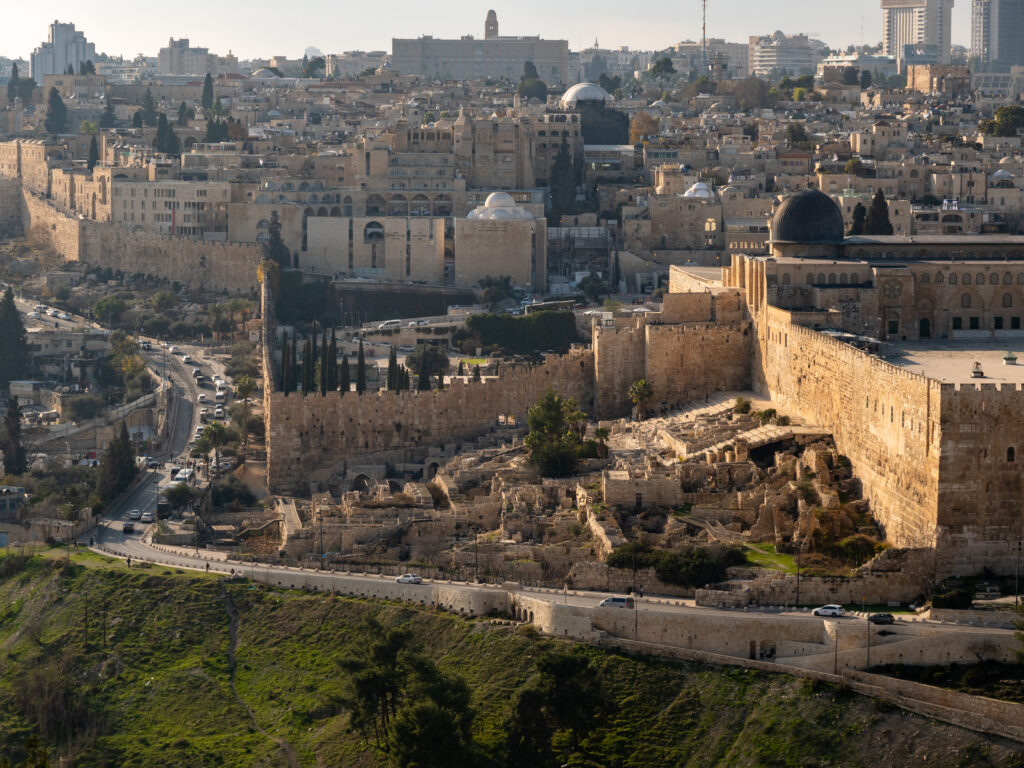Discover Jerusalem’s Rich History: From King David to Sacred Sites
Settlements in the Early Bronze Age
Scholars believe that the first human settlements in Jerusalem date back to the Early Bronze Age, around 3500 B.C. These early inhabitants, drawn by the fertile land and strategic location, laid the foundation for a city that would become a crossroads of faith, culture, and conflict.

King David’s Conquest and the First Temple
In 1000 B.C., King David captured Jerusalem and declared it the capital of the Jewish kingdom. His son, Solomon, later built the First Temple approximately 40 years after the conquest. This magnificent temple, adorned with gold and precious stones, became a central place of worship and a symbol of divine presence. Pilgrims from distant lands journeyed to Jerusalem to offer sacrifices and seek spiritual solace within its hallowed walls.

Centuries of Struggle and Resilience
Jerusalem’s history is etched with the scars of conflict. It has weathered 52 attacks, 44 captures, 23 sieges, and two destructions. Babylonians, Persians, Greeks, Romans, Crusaders, and Ottomans—all have left their mark on this storied city. Yet, like a phoenix rising from the ashes, Jerusalem perseveres. Its cobblestone streets echo with the footsteps of prophets, conquerors, scholars, and seekers—a testament to the indomitable spirit of humanity.
The Holy City: A Tapestry of Faith
For believers of various faiths, Jerusalem holds immense significance:
- Judaism: The Western Wall (Wailing Wall) remains a sacred site, where prayers echo against ancient stones. Devotees slip handwritten notes into its crevices, pouring out their hopes and dreams.

- Christianity: The Church of the Holy Sepulchre stands on the hill where Jesus was crucified and buried. Pilgrims touch the Stone of Anointing, believing it to be the very spot where Jesus’ body was prepared for burial.

- Islam: The Dome of the Rock, with its golden dome, graces the skyline. Built on the Temple Mount, it commemorates the Prophet Muhammad’s Night Journey to heaven. Although non-Muslims cannot enter, its beauty is visible from afar.

Layers of Meaning
From the narrow alleys of the Via Dolorosa, where Jesus is believed to have carried the cross, to the serene olive groves of the Mount of Olives, every stone in Jerusalem tells a story. The Tower of David—a fortress, palace, and museum—stands as a sentinel, guarding the city’s past. The Cardo, a Roman-era collonaded street, whispers tales of commerce and daily life.

Legacy and Unity
Despite its tumultuous past, Jerusalem continues to inspire awe and reverence. Artists capture its essence on canvas, poets weave verses about its sunsets, and scholars debate its mysteries. As you walk its ancient streets, remember that you tread upon layers of history—both sacred and secular. Jerusalem is not merely a city; it is a living testament to the resilience of the human spirit and the enduring quest for meaning.

Feel free to explore deeper, add personal insights, and share your own connection to this ancient city. Remember to respect local customs, embrace the city’s diversity, and immerse yourself in the magic of Jerusalem.
Before travelling, check for any travel advisories and respect the cultural sensitivities of this sacred city.














